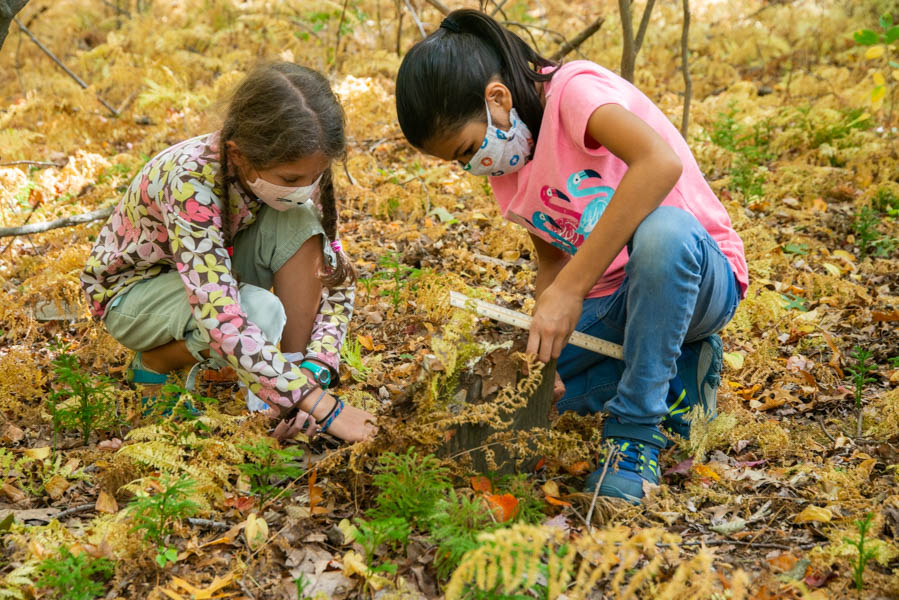
New! The Schoolyard is an Ecosystem!
Grade levels: K, 2, 5
Cost: $195 + travel per classroom
Duration: 45 minutes
No matter what your schoolyard looks like, it is a unique ecosystem where plants and animals interact with each other and their environment. In this field trip, students explore the school grounds, practicing the skills of observation, data collection and analysis to increase their understanding of the interdependence of living things and earth’s systems in the schoolyard web of life.
We are all aware that outdoors is safer during a pandemic. But outdoor learning is also known to reduce anxiety and increase focus in children, as well as increasing their interest in the environment. This in-person schoolyard field trip gives you and your students the opportunity to deepen understanding of science concepts while immersing you in an authentic connection to your own place. This field trip will incorporate STEM practices through hands-on explorations. The outdoor classroom awaits!
Standards for The Schoolyard is an Ecosystem
Kindergarten: Earth and Space Sciences
ESS2. Earth’s Systems
K-ESS2-2. Construct an argument supported by evidence for how plants and animals (including humans) can change the environment.
Clarification Statement:
- Examples of plants and animals changing their environment could include a squirrel digging holes in the ground and tree roots that break concrete.
Grade 2: Life Science
LS2. Ecosystems: Interactions, Energy, and Dynamics
2-LS2-3(MA). Develop and use models to compare how plants and animals depend on their surroundings and other living things to meet their needs in the places they live.
Grade 5: Life Science
LS2. Ecosystems: Interactions, Energy, and Dynamics
5-LS2-1. Develop a model to describe the movement of matter among producers, consumers, decomposers, and the air, water, and soil in the environment to (a) show that plants produce sugars and plant materials, (b) show that animals can eat plants and/or other animals for food, and (c) show that some organisms, including fungi and bacteria, break down dead organisms and recycle some materials back to the air and soil.
Program categories
Earth and Space Sciences, Life ScienceShare this page with friends!




